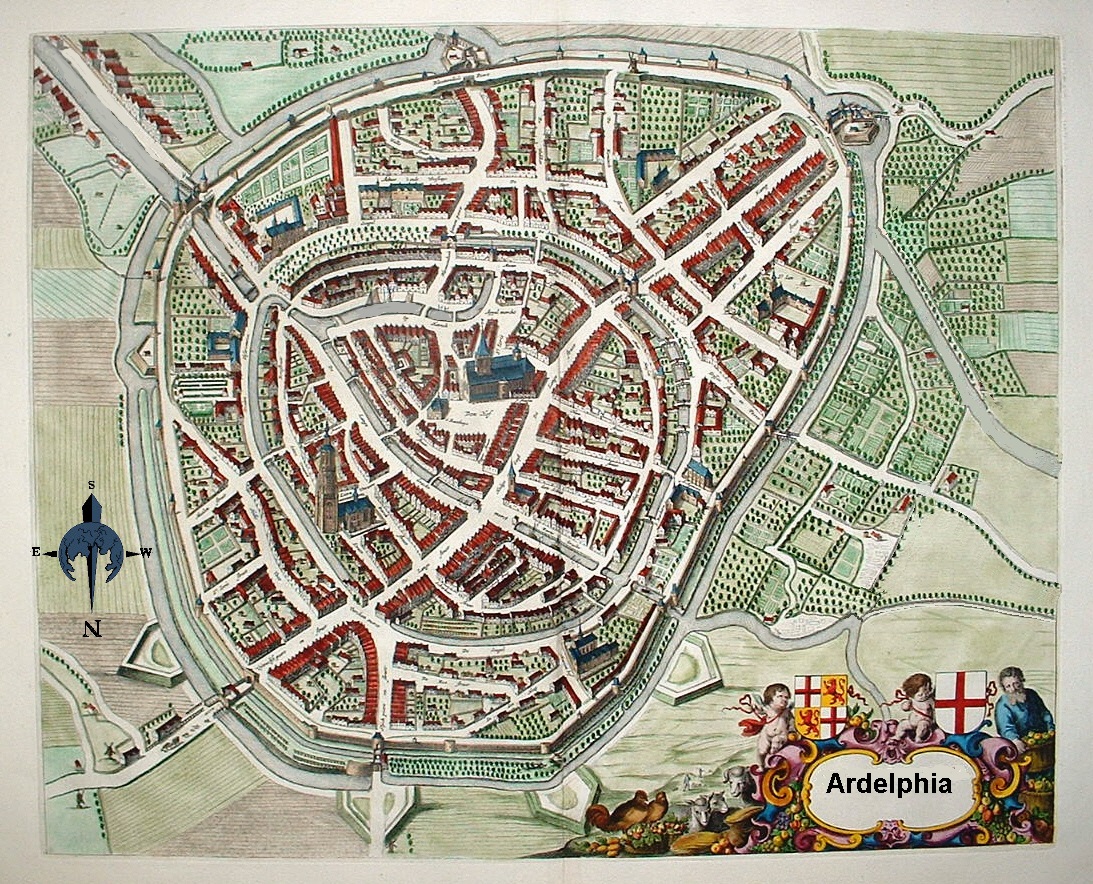
Ardelphia 840 AC
by RobinThis map created from an old map of the Dutch Town of Amersfoort.
I changed some roads and waterways, removed vessels, placed the D&D compasrose, (Important; NORTH is directed DOWN of this map!!), and named the map.
The heraldry seems alright and fitting, .
As Geoff Gander suggested; the city was probably highly trade-oriented and artistic, but its proximity to the Broken Lands would have required a strong military presence. It is also mentioned as having been a competitor to Corunglain.. The city once had a legendary temple to Asterius that boasted 336 bells - one was rung for each day of the year. After the city fell the golden bells were of course looted, and remnants of the House that founded the city have sworn an oath to recover as many of them as they can,
The Temple is the central one on the Map.
The other towerstructure is a former mage tower. He had several student. The city had underwent a few stages in development, the central part, with its concentric redirigated water canals and simple wooden walls were the first city borders and defense. The City of Ardelphia later became a great metropolis of multiculturalism compared to the mud hole of Braejr, and as thus expanded greatly. New canals, defenseworks (sort of earthen forts) and city walls (earthen walls on the outside of strurdy stone walls.) were added.
The Mage tower came to be. The other important buildings (bleuroofed in the map, were a cloister (East), Military school (South West), Merchant Chambers (somewhat like the great Darokin Halls) are South East, On the Market, the small stone structure was city Hall, Nothwest was a well known Tavern, larger than many current taverns., North was something Glantri was angered about, a Public Library...how denigrating, to let commoners enable to learn, study or even read. The small templelike stucture was a building know as "Shrine to any" here shrines to many good immortals could be found, and it was this that enabled Ardelphia to become a cultural melting pot. If you behaved, paid your taxes, did your deus, you were welcome. Vagrants, beggars were however sent outside the city walls.
Today 1014 AC Ardelphia is a ruined city, the stone buildings still exist, but are greatly damaged due weather effects. the wooden and half-timbered houses are the worst, less than 25% is still standing.
